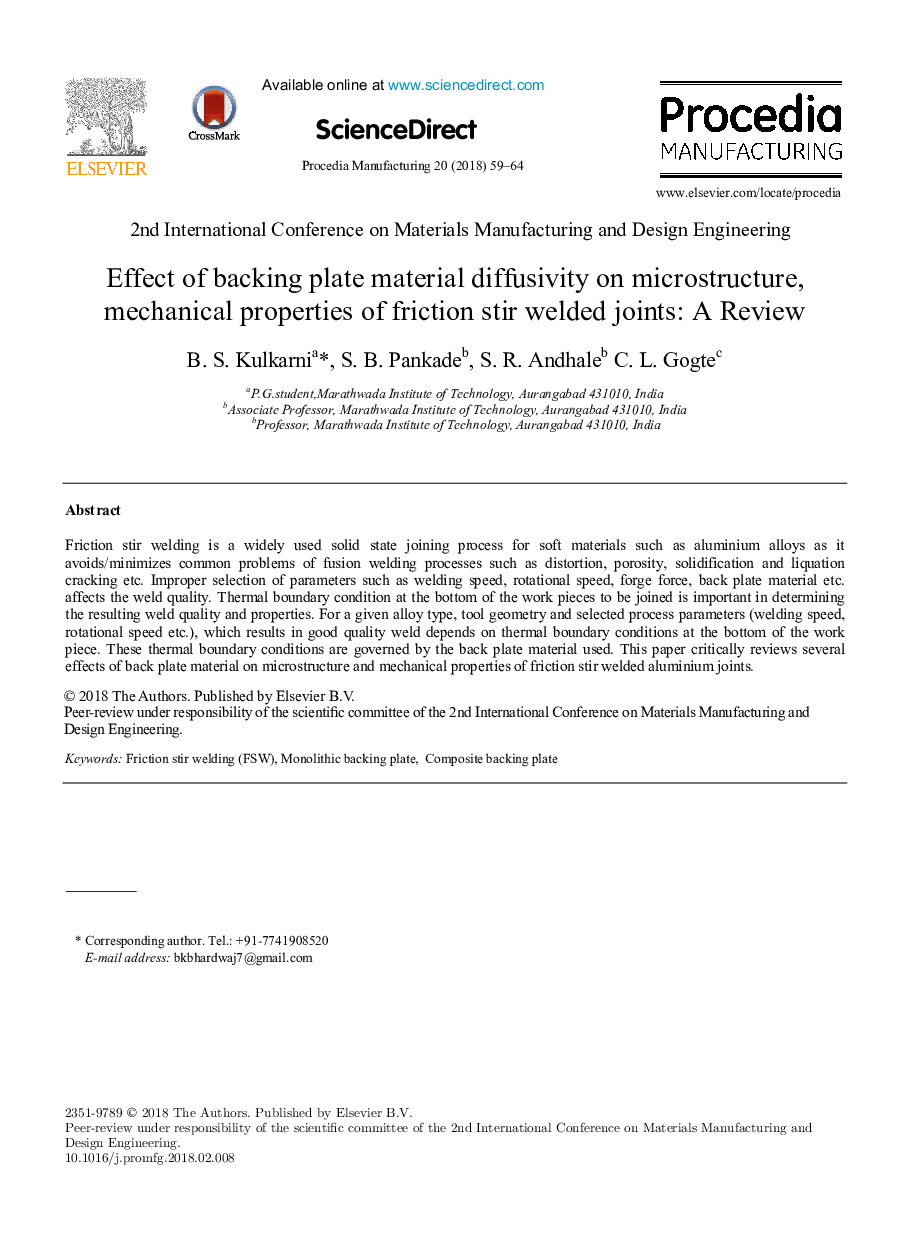| Article ID | Journal | Published Year | Pages | File Type |
|---|---|---|---|---|
| 7545252 | Procedia Manufacturing | 2018 | 6 Pages |
Abstract
Friction stir welding is a widely used solid state joining process for soft materials such as aluminium alloys as it avoids/minimizes common problems of fusion welding processes such as distortion, porosity, solidification and liquation cracking etc. Improper selection of parameters such as welding speed, rotational speed, forge force, back plate material etc. affects the weld quality. Thermal boundary condition at the bottom of the work pieces to be joined is important in determining the resulting weld quality and properties. For a given alloy type, tool geometry and selected process parameters (welding speed, rotational speed etc.), which results in good quality weld depends on thermal boundary conditions at the bottom of the work piece. These thermal boundary conditions are governed by the back plate material used. This paper critically reviews several effects of back plate material on microstructure and mechanical properties of friction stir welded aluminium joints.
Keywords
Related Topics
Physical Sciences and Engineering
Engineering
Industrial and Manufacturing Engineering
Authors
B.S. Kulkarni, S.B. Pankade, S.R. Andhale, C.L. Gogte,
